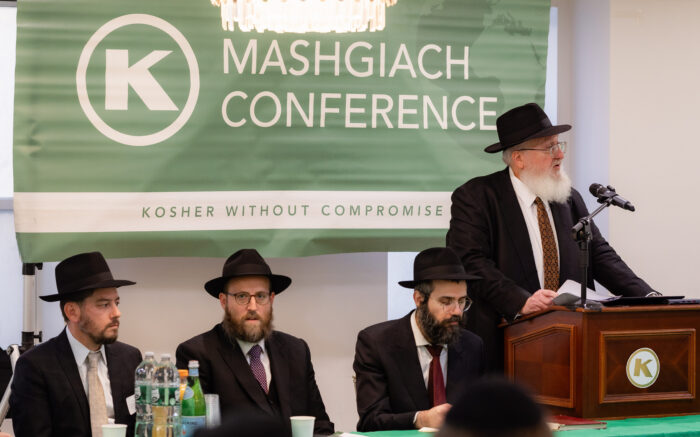What is vanilla?
Vanilla is the world’s most popular flavor. About 75 percent of commercial vanilla flavor is used in the chocolate and ice cream industries, with the remaining 25 percent used in many other types of products, including baked goods, yogurts, coffees and beverages.
Natural vanilla beans are the second most expensive spice (after saffron), due to limited supply, high demand, and a long and costly growing and manufacturing process. Very little of the vanilla flavor in the world is from natural vanilla beans; artificial or imitation vanilla make up the majority of the vanilla used in most products.
How is vanilla made?
Vanilla beans were first discovered in Mexico, and are now grown in many tropical parts of the world, with Madagascar being the largest producer. Since the majority of vanilla beans are grown in a single country, hurricanes and other local events can greatly affect the supply and cost of natural vanilla.
Vanilla beans grow in pods on trees1 for about nine months. After nine months, the green vanilla beans are harvested and undergo a long curing process to develop their flavor and smell.
The first step is a hot water treatment to activate the natural enzyme in the bean and start the curing process. Over the next few weeks, the beans are laid out in the sun during the day, and wrapped in cloths and packed in boxes to sweat at night. The vanillin flavor starts to develop and the pods turn brown. The pods are then dried and aged for a few months until they fully develop their vanilla flavor. The pods are exported to extraction facilities around the world where they are milled and soaked in a solution of alcohol and water. During this process, the alcohol extracts the flavor from the beans. Although the main flavor component of the beans is vanillin, there are other flavors that contribute to the taste as well. That is why natural vanilla is richer in flavor than imitation vanilla flavors. After extraction, the solids are filtered out and the natural vanilla extract is packaged.
Due to the high cost and low supply of vanilla beans, there is a large market for artificial flavoring, which may not provide the same richness of flavor, but can be a reliable supply and cost-effective source for a flavor that is in very high demand.
One way to produce vanillin is through the fermentation of carbohydrates – typically sugar (possibly with brewer’s yeast) or rice bran. A microorganism is fed with carbohydrates, along with vitamins, minerals, and other additives, and metabolizes them into a liquid solution, the vanillin. This solution is filtered, washed with alcohol, concentrated, crystalized, filtered again, and then packaged. According to food labeling regulations,2 such a product can be labeled as natural vanilla.
Artificial vanilla can be produced by using a petrochemical called guaiacol. The guaiacol is reacted with other chemicals in a series of reactions to produce vanillin. The vanillin is separated from the mixture and processed to purify and remove any other chemicals. The vanillin solution is then mixed with ethanol, which causes the vanillin to crystalize. The liquid is removed and the vanillin is dried and packaged.
Another chemical that can be used for artificial vanillin is lignin, a chemical byproduct of paper production from wood. Lignin is a large molecule that can be broken down into smaller components through chemical treatments, and those small components can go through an oxidization treatment to turn them into vanillin.
Is vanilla kosher?
The main kashrus concern with extract from vanilla beans and artificial vanilla is the alcohol that can be derived from sugar or corn, but can also be produced from a grape source (Stam Yainom), dairy source, or from chometz sources, such as wheat and barley, which pose an issue for Passover.
When vanilla is produced by fermentation there are many ingredients involved. All ingredients, additives, and processing aids need to be kosher for the vanilla to be certified kosher.
All types of vanilla, regardless of the production method, require a reliable
kosher certification.
INTERESTING HALACHIC ANALYSIS: WHAT HAPPENS IF THERE IS A MISTAKE?
As we all know, mistakes can happen in a kosher kitchen. Typically, when a non-kosher additive is accidentally added to a kosher mixture, we can apply the laws of bittul (nullification). If something becomes bottul, it is nullified
because it comprised less than 1/60th of the mixture and the finished product can usually be declared kosher, b’di’eved (after the fact). One of the exceptions to the rule is “milsa de’avidah leta’amah” – anything intended to add flavor cannot be nullified as long as the flavor is noticeable3.
Vanilla is meant to provide flavor and is typically used in small amounts of less than 1/60th, so it might seem that the final mixture should be declared
non-kosher, even b’di’eved, since the vanilla would not be bottul. However, after careful analysis, the actual flavor component of the vanilla is from a kosher source4 and is not the kosher concern. Only the alcohol, which is merely a processing aid and not part of the flavoring itself, is not kosher certified. Therefore, in the final review, natural and artificial non-kosher vanilla can sometimes be nullified if it is accidentally used and is less than 1/60th of the mixture.
Vanilla from Israel
In a recent industry development, an Israeli company started growing vanilla beans in tropical greenhouses in Israel. If an Israeli vanilla bean was grown during a shmitta year, or has any issue with mitzvos hateluyos ba’aretz (orlah, terumos, ma’asros, etc.), and is used in a product, it would not be nullified even when less than 1/1000th, because the flavor itself is the kashrus issue.
1 Vanilla beans are not considered legumes (kitniyos).
2 Food produced through microbial fermentation is considered natural – US FDA 21CFR101.22 and European regulation 1334/2008.
3 See more in page 18 of the Kosher Spirit – Tishrei 5781.
4 This refers to the vanilla beans or chemicals used to create imitation vanilla. If fermented vanilla extract is mixed into a kosher product it will also usually be the same ruling because the main ingredients are usually kosher and possible non-kosher additives are typically not considered the main contributors to the flavor (and would be nullified because zeh vazeh goreim).
Rabbi Hendel is a member of the OK Kosher Vaad HaKashrus.


 EN
EN  ZH
ZH  KR
KR  BR
BR  ES
ES  IN
IN  IL
IL 




